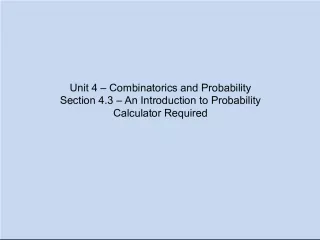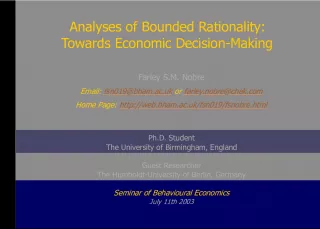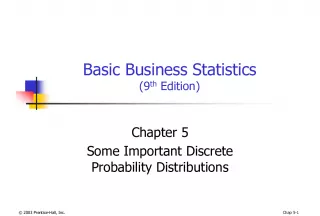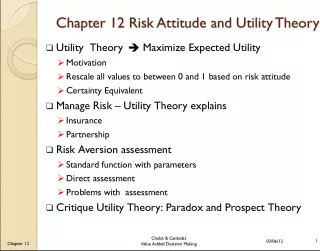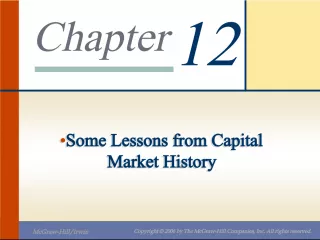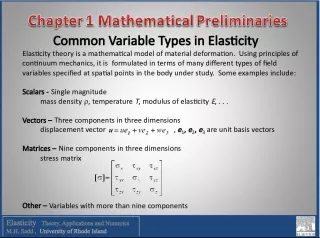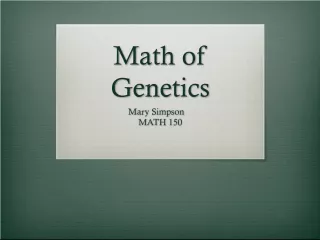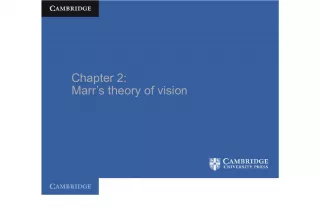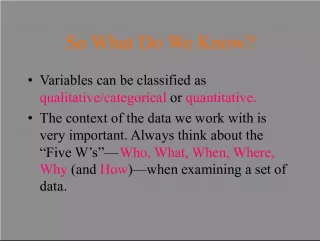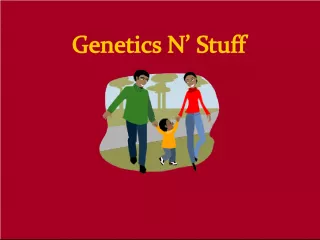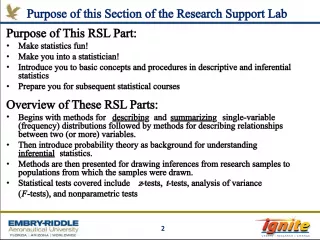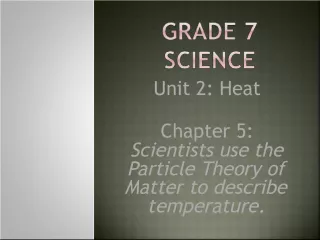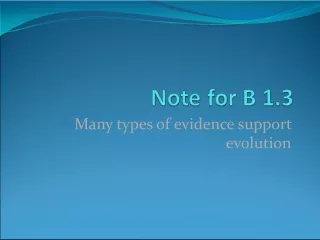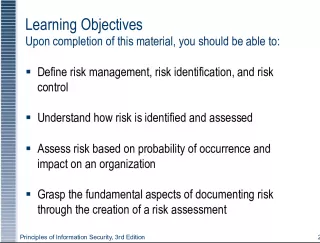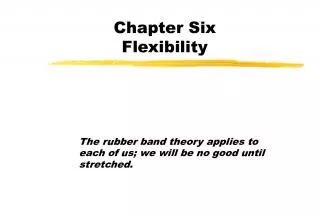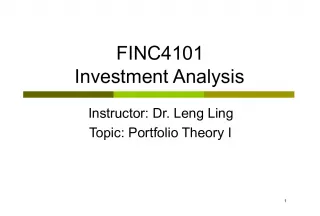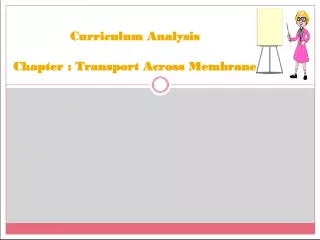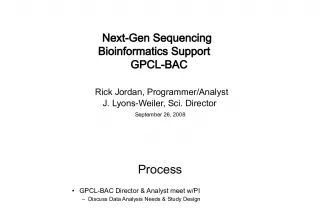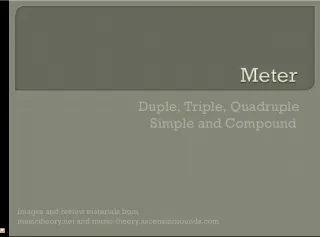Understanding Probability Theory for Predictive Analysis
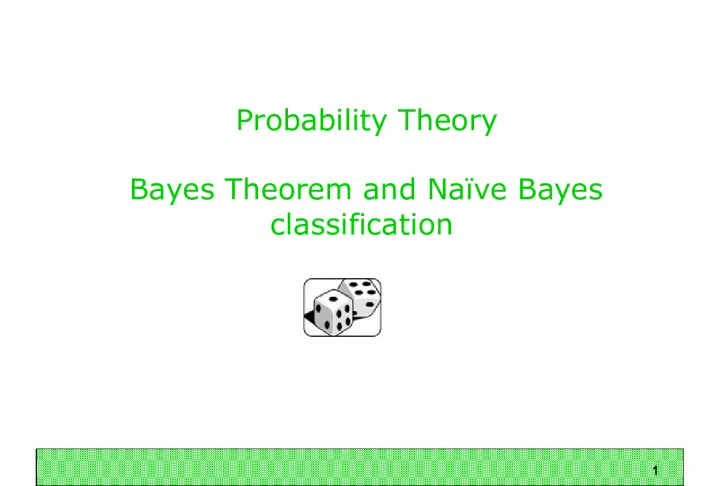

This article explains how probability theory helps predict the likelihood of various outcomes for different events. It covers Bayes Theorem and Nave Bayes classification with examples from different fields.
- Uploaded on | 0 Views
-
 avianna
avianna
About Understanding Probability Theory for Predictive Analysis
PowerPoint presentation about 'Understanding Probability Theory for Predictive Analysis'. This presentation describes the topic on This article explains how probability theory helps predict the likelihood of various outcomes for different events. It covers Bayes Theorem and Nave Bayes classification with examples from different fields.. The key topics included in this slideshow are probability theory, Bayes Theorem, Nave Bayes classification, sample space, predictive analysis,. Download this presentation absolutely free.
Presentation Transcript
1. 1 Probability Theory Bayes Theorem and Nave Bayes classification
2. 2 Slide adapted from Dan Jurafsky's Definition of Probability Probability theory encodes our knowledge or belief about the collective likelihood of the outcome of an event. We use probability theory to try to predict which outcome will occur for a given event.
3. 3 Slide adapted from Dan Jurafsky's Sample Spaces We think about the sample space as being set of all possible outcomes: For tossing a coin, the possible outcomes are Heads or Tails. For competing in the Olympics, the set of outcomes for a given contest are {gold, silver, bronze, no_award}. For computing part-of-speech, the set of outcomes are {JJ, DT, NN, RB, etc.} We use probability theory to try to predict which outcome will occur for a given event.
4. 4 Slides adapted from Mary Ellen Califf Axioms of Probability Theory Probabilities are real numbers between 01 representing the a priori likelihood that a proposition is true. Necessarily true propositions have probability 1, necessarily false have probability 0. P(true) = 1 P(false) = 0
5. 5 Slide adapted from Dan Jurafsky's Probability Axioms Probability law must satisfy certain properties: Nonnegativity P(A) >= 0, for every event A Additivity If A and B are two disjoint events, then the probability of their union satisfies: P(A U B) = P(A) + P(B) Normalization The probability of the entire sample space S is equal to 1, i.e., P(S) = 1. P(Cold) = 0.1 (the probability that it will be cold) P(Cold) = 0.9 (the probability that it will be not cold)
6. 6 Slide adapted from Dan Jurafsky's An example An experiment involving a single coin toss There are two possible outcomes, Heads and Tails Sample space S is {H,T} If coin is fair, should assign equal probabilities to 2 outcomes Since they have to sum to 1 P({H}) = 0.5 P({T}) = 0.5 P({H,T}) = P({H})+P({T}) = 1.0
7. 7 Slide adapted from Dan Jurafsky's Another example Experiment involving 3 coin tosses Outcome is a 3-long string of H or T S ={HHH,HHT,HTH,HTT,THH,THT,TTH,TTT} Assume each outcome is equally likely (equiprobable) Uniform distribution What is probability of the event A that exactly 2 heads occur? A = {HHT,HTH,THH} P(A) = P({HHT})+P({HTH})+P({THH}) = 1/8 + 1/8 + 1/8 =3/8
8. 8 Slide adapted from Dan Jurafsky's Probability definitions In summary: number of outcomes corresponding to event E P(E) = --------------------------------------------------------- total number of outcomes Probability of drawing a spade from 52 well-shuffled playing cards: 13/52 = = 0.25
9. 9 Slide adapted from Dan Jurafsky's How about non-uniform probabilities? An example: A biased coin, twice as likely to come up tails as heads, is tossed twice What is the probability that at least one head occurs? Sample space = {hh, ht, th, tt} (h = heads, t = tails) Sample points/probability for the event: (each head has probability 1/3; each tail has prob 2/3): ht 1/3 x 2/3 = 2/9 hh 1/3 x 1/3= 1/9 th 2/3 x 1/3 = 2/9 tt 2/3 x 2/3 = 4/9 Answer: 5/9 = 0.56 (sum of weights in red since want outcome with at least one heads) By contrast, probability of event for the un biased coin = 0.75
10. 10 Slide adapted from Dan Jurafsky's Moving toward language Whats the probability of drawing a 2 from a deck of 52 cards? Whats the probability of a random word (from a random dictionary page) being a verb?
11. 11 Slide adapted from Dan Jurafsky's Probability and part of speech tags Whats the probability of a random word (from a random dictionary page) being a verb? How to compute each of these? All words = just count all the words in the dictionary # of ways to get a verb: number of words which are verbs! If a dictionary has 50,000 entries, and 10,000 are verbs. P(V) is 10000/50000 = 1/5 = .20
12. 12 Slide adapted from Dan Jurafsky's Independence Most things in life depend on one another, that is, they are dependent: If I drive to SF, this may effect your attempt to go there. It may also effect the environment, the economy of SF,etc. If 2 events are independent, this means that the occurrence of one event makes it neither more nor less probable that the other occurs. If I flip my coin, it wont have an effect on the outcome of your coin flip. P(A,B)= P(A) P(B) if and only if A and B are independent. P(heads,tails) = P(heads) P(tails) = .5 .5 = .25 Note: P(A|B)=P(A) iff A,B independent P(B|A)=P(B) iff A,B independent
13. 13 Slide adapted from Dan Jurafsky's Conditional Probability A way to reason about the outcome of an experiment based on partial information How likely is it that a person has a disease given that a medical test was negative? In a word guessing game the first letter for the word is a t. What is the likelihood that the second letter is an h? A spot shows up on a radar screen. How likely is it that it corresponds to an aircraft?
14. 14 Slides adapted from Mary Ellen Califf Conditional Probability Conditional probability specifies the probability given that the values of some other random variables are known. P(Sneeze | Cold) = 0.8 P(Cold | Sneeze) = 0.6 The probability of a sneeze given a cold is 80%. The probability of a cold given a sneeze is 60%.
15. 15 Slide adapted from Dan Jurafsky's More precisely Given an experiment, a corresponding sample space S, and the probability law Suppose we know that the outcome is within some given event B The first letter was t We want to quantify the likelihood that the outcome also belongs to some other given event A. The second letter will be h We need a new probability law that gives us the conditional probability of A given B P(A|B) the probability of A given B
16. 16 Slides adapted from Mary Ellen Califf Joint Probability Distribution The joint probability distribution for a set of random variables X 1 X n gives the probability of every combination of values P(X 1 ,...,X n ) Sneeze Sneeze Cold 0.08 0.01 Cold 0.01 0.9 The probability of all possible cases can be calculated by summing the appropriate subset of values from the joint distribution. All conditional probabilities can therefore also be calculated P(Cold | Sneeze) BUT its often very hard to obtain all the probabilities for a joint distribution
17. 17 Slide adapted from Dan Jurafsky's Conditional Probability Example Lets say A is its raining. Lets say P(A) in dry California is .01 Lets say B is it was sunny ten minutes ago P(A|B) means what is the probability of it raining now if it was sunny 10 minutes ago P(A|B) is probably way less than P(A) Perhaps P(A|B) is .0001 Intuition: The knowledge about B should change our estimate of the probability of A.
18. 18 Slide adapted from Dan Jurafsky's Conditional Probability Let A and B be events P(A,B) and P(A B) both means the probability that BOTH A and B occur p(B|A) = the probability of event B occurring given event A occurs definition: p(A|B) = p(A B) / p(B) P(A, B) = P(A|B) * P(B) (simple arithmetic) P(A, B) = P(B, A) (AND is symmetric)
19. 19 Bayes Theorem We start with conditional probability definition: So say we know how to compute P(A|B). What if we want to figure out P(B|A)? We can re-arrange the formula using Bayes Theorem:
20. 20 Slide adapted from Dan Jurafsky's Deriving Bayes Rule
21. 21 Slides adapted from Mary Ellen Califf How to compute probabilities? We dont have the probabilities for most NLP problems We can try to estimate them from data (thats the learning part) Usually we cant actually estimate the probability that something belongs to a given class given the information about it BUT we can estimate the probability that something in a given class has particular values.
22. 22 Slides adapted from Mary Ellen Califf Simple Bayesian Reasoning If we assume there are n possible disjoint rhetorical zones, z 1 z n P(z i | w) = P(w | z i ) P(z i ) P(w) Want to know the probability of the zone given the word. Can count how often we see the word in a sentence from a given zone in the training set, and how often the zone itself occurs. P(w| z i ) = number of times we see this zone with this word divided by how often we see the zone This is the learning part. Since P(w) is always the same, we can ignore it. So now only need to compute P(w | z i ) P(z i )
23. 23 Slides adapted from Mary Ellen Califf Bayes Independence Example Imagine there are diagnoses ALLERGY, COLD, and WELL and symptoms SNEEZE, COUGH, and FEVER Prob Well Cold Allergy P(d) 0.9 0.05 0.05 P(sneeze|d) 0.1 0.9 0.9 P(cough | d) 0.1 0.8 0.7 P(fever | d) 0.01 0.7 0.4
24. 24 Slides adapted from Mary Ellen Califf By assuming independence, we ignore the possible interactions. If symptoms are: sneeze & cough & no fever: P(well | e) = (0.9)(0.1)(0.1)(0.99)/P(e) = 0.0089/P(e) P(cold | e) = (.05)(0.9)(0.8)(0.3)/P(e) = 0.01/P(e) P(allergy | e) = (.05)(0.9)(0.7)(0.6)/P(e) = 0.019/P(e) P(e) = .0089 + .01 + .019 = .0379 P(well | e) = .23 P(cold | e) = .26 P(allergy | e) = .50 Diagnosis: allergy Bayes Independence Example
25. 25 Kupiec et al. Feature Representation Fixed-phrase feature Certain phrases indicate summary, e.g. in summary Paragraph feature Paragraph initial/final more likely to be important. Thematic word feature Repetition is an indicator of importance Uppercase word feature Uppercase often indicates named entities. (Taylor) Sentence length cut-off Summary sentence should be > 5 words.
26. 26 Training Hand-label sentences in training set (good/bad summary sentences) Train classifier to distinguish good/bad summary sentences Model used: Nave Bayes Can rank sentences according to score and show top n to user.
27. 27 Nave Bayes Classifier The simpler version of Bayes was: P(B|A) = P(A|B)P(B)/P(A) P(Sentence | feature) = P(feature | S) P(S)/P(feature) Using Nave Bayes, we expand the number of feaures by defining a joint probability distribution: P(Sentence, f 1 , f 2 , f n ) = P(Sentence) P(f i | Sentence )/ P(f i ) We learn P(Sentence) and P(f i | Sentence) in training Test: we need to state P(Sentence | f 1 , f 2 , f n ) P(Sentence| f 1 , f 2 , f n ) = P(Sentence, f 1 , f 2 , f n ) / P(f 1 , f 2 , f n )
28. 28 Details: Bayesian Classifier Assuming statistical independence: Probability that sentence s is included in summary S , given that sentences feature value pairs Probability of feature-value pair occurring in a source sentence which is also in the summary compression rate Probability of feature-value pair occurring in a source sentence
29. 29 From lecture notes by Nachum Dershowitz & Dan Cohen Each Probability is calculated empirically from a corpus See how often each feature is seen with a sentence selected for a summary, vs how often that feature is seen in any sentence. Higher probability sentences are chosen to be in the summary Performance: For 25% summaries, 84% precision Bayesian Classifier (Kupiec at el 95) Bayesian Classifier (Kupiec at el 95) Bayesian Classifier (Kupiec at el 95) Bayesian Classifier (Kupiec at el 95)
30. 30 How to compute this? For training, for each feature f: For each sentence s: Is the sentence in the target summary S? Increment T Increment F no matter which sentence it is in. P(f|S) = T/N P(f) = F/N For testing, for each document: For each sentence Multiply the probabilities of all of the features occurring in the sentence times the probability of any sentence being in the summary (a constant). Divide by the probability of the features occurring in any sentence.
31. 31 Learning Sentence Extraction Rules (Kupiec et al. 95) Results About 87% (498) of all summary sentences (568) could be directly matched to sentences in the source (79% direct matches, 3% direct joins, 5% incomplete joins) Location was best feature at 163/498 = 33% Para+fixed-phrase+sentence length cut-off gave best sentence recall performance 217/498=44% At compression rate = 25% (20 sentences), performance peaked at 84% sentence recall J. Kupiec, J. Pedersen, and F. Chen. "A Trainable Document Summarizer", Proceedings of the 18th ACM-SIGIR Conference, pages 68--73, 1995.
32. 32 Language Identification
33. 33 Language identification Tutti gli esseri umani nascono liberi ed eguali in dignit e diritti. Essi sono dotati di ragione e di coscienza e devono agire gli uni verso gli altri in spirito di fratellanza. Alle Menschen sind frei und gleich an Wrde und Rechten geboren. Sie sind mit Vernunft und Gewissen begabt und sollen einander im Geist der Brderlichkeit begegnen. Universal Declaration of Human Rights, UN, in 363 languages http://www.unhchr.ch/udhr/navigate/alpha.htm
34. 34 Language identification gaux eguali iguales edistmn How to do determine, for a stretch of text, which language it is from?
35. 35 Language Identification Turns out to be really simple Just a few character bigrams can do it (Sibun & Reynar 96) Based on language models for sample languages
36. 36 Language model basics Unigram and bigram models Evaluating N-gram language models Perplexity The intuition of perpexity is that given two probabilistic models, the better model is the one that better predicts new data (not used to train the model) We can measure better prediction by comparing the probability the model assigns to the test data The better probability will assign a higher probability
37. 37 Perplexity minimazing perplexity is equivalent to maximazing the test set probability according to the language model
38. 38 Entropy X---a random variable with probability distribution p(x) Measures how predictive a given N-gram model is about what the next word could be
39. 39 KL divergence (relative entropy) Basis of comparing two probability distributions
40. 40 Language Identification Turns out to be really simple Just a few character bigrams can do it (Sibun & Reynar 96) Used Kullback Leibler distance (relative entropy) Compare probability distribution of the test set to those for the languages trained on Smallest distance determines the language Using special character sets helps a bit, but barely
41. 41 Language Identification (Sibun & Reynar 96)
42. 42 Confusion Matrix A table that shows, for each class, which ones your algorithm got right and which wrong Algorithms guess Gold standard
43. 43
44. 44 Author Identification (Stylometry)
45. 45 Author Identification Also called Stylometry in the humanities An example of a Classification Problem Classifiers: Decide which of N buckets to put an item in (Some classifiers allow for multiple buckets)
46. 46 The Disputed Federalist Papers In 1787-1788, Jay, Madison, and Hamilton wrote a series of anonymous essays to convince the voters of New York to ratify the new U. S. Constitution. Scholars have consensus that: 5 authored by Jay 51 authored by Hamilton 14 authored by Madison 3 jointly by Hamilton and Madison 12 remain in dispute Hamilton or Madison?
47. 47 Author identification Federalist papers In 1963 Mosteller and Wallace solved the problem They identified function words as good candidates for authorships analysis Using statistical inference they concluded the author was Madison Since then, other statistical techniques have supported this conclusion.
48. 48 Function vs. Content Words High rates for by favor M, low favor H High rates for from favor M, low says little High rates for to favor H, low favor M
49. 49 Function vs. Content Words No consistent pattern for war
50. 50 Federalist Papers Problem Fung, The Disputed Federalist Papers: SVM Feature Selection Via Concave Minimization, ACM TAPIA03
51. 51 From: Foundations of Statistical Natural Language Processing. Manning and Schutze Classification Goal: Assign objects from a universe to two or more classes or categories Examples: Problem Object Categories Tagging Word POS Sense Disambiguation Word The words senses Information retrieval Document Relevant/not relevant Sentiment classification Document Positive/negative Author identification Document Authors
52. 52 Slide adapted from Paul Bennet Text Categorization Applications Web pages organized into category hierarchies Journal articles indexed by subject categories (e.g., the Library of Congress, MEDLINE, etc.) Responses to Census Bureau occupations Patents archived using International Patent Classification Patient records coded using international insurance categories E-mail message filtering News events tracked and filtered by topics Spam
53. 53 Yahoo News Categories
54. 54 Slide adapted froml Paul Bennett Cost of Manual Text Categorization Yahoo! 200 (?) people for manual labeling of Web pages using a hierarchy of 500,000 categories MEDLINE (National Library of Medicine) $2 million/year for manual indexing of journal articles using MEdical Subject Headings (18,000 categories) Mayo Clinic $1.4 million annually for coding patient-record events using the International Classification of Diseases (ICD) for billing insurance companies US Census Bureau decennial census (1990: 22 million responses) 232 industry categories and 504 occupation categories $15 million if fully done by hand
55. 55 Slide adapted froml Paul Bennett Knowledge Statistical Engineering Learning For US Census Bureau Decennial Census 1990 232 industry categories and 504 occupation categories $15 million if fully done by hand Define classification rules manually: Expert System AIOCS Development time: 192 person-months (2 people, 8 years) Accuracy = 47% Learn classification function Nearest Neighbor classification (Creecy 92: 1-NN) Development time: 4 person-months (Thinking Machine) Accuracy = 60% vs .
56. 56 Text Topic categorization Topic categorization: classify the document into semantics topics The U.S. swept into the Davis Cup final on Saturday when twins Bob and Mike Bryan defeated Belarus's Max Mirnyi and Vladimir Voltchkov to give the Americans an unsurmountable 3-0 lead in the best-of-five semi-final tie. One of the strangest, most relentless hurricane seasons on record reached new bizarre heights yesterday as the plodding approach of Hurricane Jeanne prompted evacuation orders for hundreds of thousands of Floridians and high wind warnings that stretched 350 miles from the swamp towns south of Miami to the historic city of St. Augustine.
57. 57 The Reuters collection A gold standard Collection of (21,578) newswire documents. For research purposes: a standard text collection to compare systems and algorithms 135 valid topics categories
58. 58 Reuters Top topics in Reuters
59. 59 Reuters Document Example
60. 60 Classification vs. Clustering Classification assumes labeled data: we know how many classes there are and we have examples for each class (labeled data). Classification is supervised In Clustering we dont have labeled data; we just assume that there is a natural division in the data and we may not know how many divisions (clusters) there are Clustering is unsupervised
61. 61 Categories (Labels, Classes) Labeling data 2 problems: Decide the possible classes (which ones, how many) Domain and application dependent Label text Difficult, time consuming, inconsistency between annotators
62. 62 Reuters Example, revisited
63. 63 Binary vs. multi-way classification Binary classification: two classes Multi-way classification: more than two classes Sometime it can be convenient to treat a multi-way problem like a binary one: one class versus all the others, for all classes
64. 64 Features >>> text = " Seven-time Formula One champion Michael Schumacher took on the Shanghai circuit Saturday in qualifying for the first Chinese Grand Prix. " >>> label = sport >>> labeled_text = LabeledText(text, label) Here the classification takes as input the whole string Whats the problem with that? What are the features that could be useful for this example?
65. 65 Feature terminology Feature: An aspect of the text that is relevant to the task Some typical features Words present in text Frequency of words Capitalization Are there NE? WordNet Others?
66. 66 Feature terminology Feature: An aspect of the text that is relevant to the task Feature value: the realization of the feature in the text Words present in text : Kerry, Schumacher, China Frequency of word: Kerry(10), Schumacher(1) Are there dates? Yes/no Are there PERSONS? Yes/no Are there ORGANIZATIONS? Yes/no WordNet: Holonyms (China is part of Asia), Synonyms(China, People's Republic of China, mainland China)
67. 67 Feature Types Boolean (or Binary) Features Features that generate boolean (binary) values. Boolean features are the simplest and the most common type of feature. f 1 (text) = 1 if text contain Kerry 0 otherwise f 2 (text) = 1 if text contain PERSON 0 otherwise
68. 68 Feature Types Integer Features Features that generate integer values. Integer features can be used to give classifiers access to more precise information about the text. f 1 (text) = Number of times text contains Kerry f 2 (text) = Number of times text contains PERSON
69. 69 Feature selection How do we choose the right features? Next lecture
